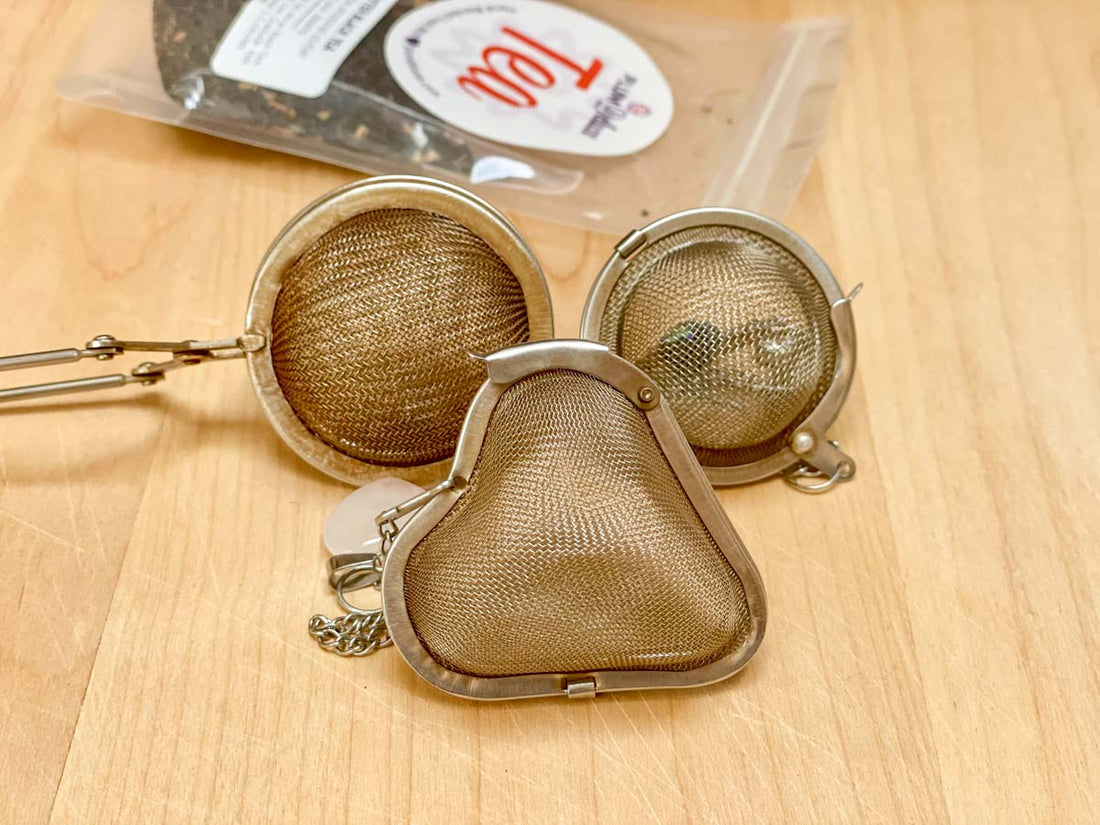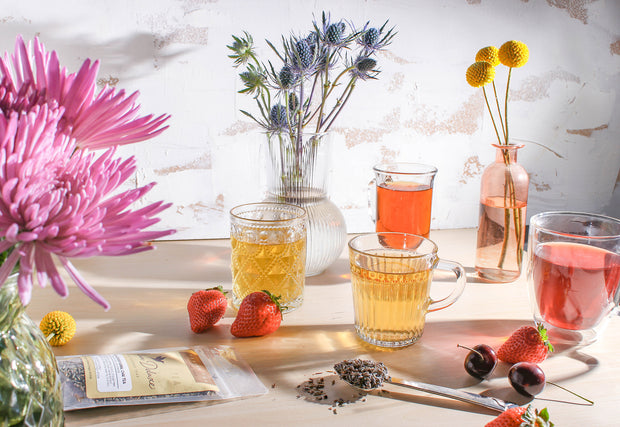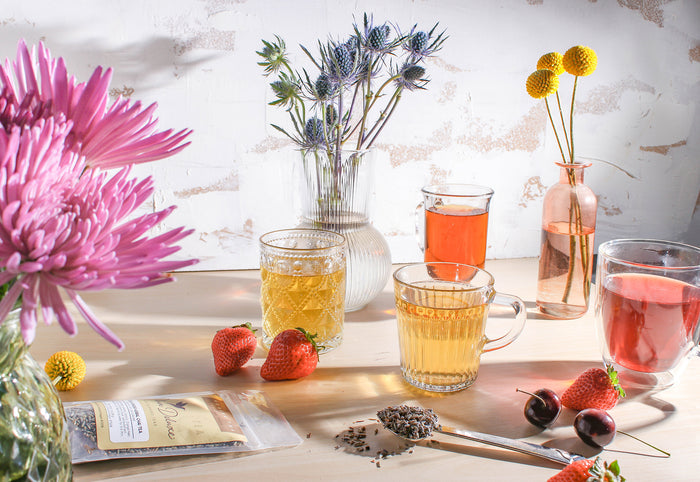
How to Clean a Tea Infuser
It really couldn’t be simpler.
Soak your infuser in your chosen solution overnight. The next day, scrub at it a bit if necessary. And that is it.
Of course, I will now go on at length about how to clean a tea infuser, but that’s really everything you need to take away from this article.
Soak. Scrub. Sip.
Done and done.

Soak it in What, Though?
Excellent question! In what, exactly, do you soak your infuser?
In my wanderings, I have come across three different methods, and I’ve tested them all.
They include:
- Baking Soda: Fill your favorite mug with hot water, into which you will dissolve 1 tsp baking soda. Soak your infuser for at least four hours, or overnight for best results.
- White Vinegar: Immerse your infuser in white vinegar and let sit overnight.
- Vodka: Combine one part vodka and four parts hot water. Let your infuser steep for at least four hours, or overnight.
I will tell you, for the sake of transparency, that bleach is also frequently listed as an effective method for how to clean a tea infuser, but I can’t in good conscience encourage you to soak anything in bleach that will then come into contact with the tea you consume.
I suppose, if for some reason you don’t have baking soda, vinegar, or vodka on hand, and you’re in some sort of tea infuser cleaning emergency, bleach will do the trick. But for the record, I do not recommend it. After all, tea should — if anything — help detox your body, not put harsh chemicals into it.
Okay. Stepping down from the soapbox now.
So, how do you choose which solution to use?
Each method I tested effectively cleaned my tarnished infusers, so I say: take your pick! From what I’ve experienced, you can’t go wrong.
I will, however, break down the pros and cons of each, as I see them.
Each one required at least a bit of gentle scrubbing after soaking—I used a small bristle brush I have lying around to clean inside metal straws, though you could use any type of kitchen scrubber or an old toothbrush. (Or your current toothbrush, I suppose. That’s between you and your toothbrush.)

Vinegar Solution
The vinegar did markedly improve the shine of the infuser and remove some of the stains, but it didn’t remove them entirely.
To be fair, this infuser was the most bedraggled and besmirched of them all, so the vinegar had the biggest hill to climb, and that may have affected the outcome.
I scrubbed at it for a while, but in the end, I decided to pop the infuser in the baking soda solution for one more night, and that restored it to its former fresh-from-the-packaging glory.
I didn’t notice any residual taste in the next cuppa brewed with the vinegar infuser. As long as you give it a good rinse after soaking, you shouldn’t need to worry about the left-over essence of vinegar interfering with the taste of your black tea, the invigorating properties of your green tea, or the soothing notes in your herbal blend.
Naturally, where there is vinegar, there is also the smell of vinegar. If this bothers you, I would try a different route. I’m not bothered by the odor, so even though it didn’t perfectly polish my infuser, I would try this method again. It’s cheap, fairly effective, and I always have a big jug of white vinegar on hand for various cleaning projects. For me, it’s a decent infuser cleaning solution.
Overall rating: 3.5 out of 5 stars.
1.5 stars lost because it was slightly less effective and slightly more smelly.
Vodka Solution
The vodka was a perfectly effective method.
It removed stains well on its own and only required a small amount of brushing to finish the job. Performance-wise, I have no complaints.
Although I might argue that using a quarter cup of vodka simply to soak your tea strainer is a waste of perfectly good booze, and not quite as cost-effective as vinegar or baking soda. However, if you happen to have a particularly cheap bottle lying around, or one that lured you in with a fun label but failed to deliver on flavor, you can always put it to good use by cleaning your infusers!
PS, if you’re looking for other fun things to do with tea and vodka, check out this Earl Grey cocktail, this grown-up take on a Thai Iced Tea, or this vanilla hibiscus cake. Yum, yum, and yum!
Overall rating: 4 out of 5 stars.
1 star lost for cost-effectiveness.
Baking Soda Solution
This was my favorite of the three methods. There’s no mess, no smell, no downside!
The baking soda-soaked infuser required the least amount of scrubbing after the fact, and when the vinegar method didn’t quite cut the mustard (or in this case, the “rust-ard”) the baking soda was able to step up to the plate. (Or in this case, the saucer. I can’t stop the puns.)
It’s cheap, simple, easily accessible, and by all accounts, highly effective!
Overall rating: 5 out of 5 stars

Okay, Cool, But What About Tea Stains on These Other Things…?
If tea stains are plaguing more than just your favorite infusers, check out this post on how to remove tea stains from everything you love.
Try these cleansing methods and let us know which one you liked best! Because as we all know, a clean tea infuser is the gateway to a clean mind, body, and spirit.
Happy steeping, my friends!

![Spring Break Tea Variety Pack [6-Pack Variety of Flavors]](http://www.plumdeluxe.com/cdn/shop/files/spring-break-pack.jpg?v=1740682266&width=165)















